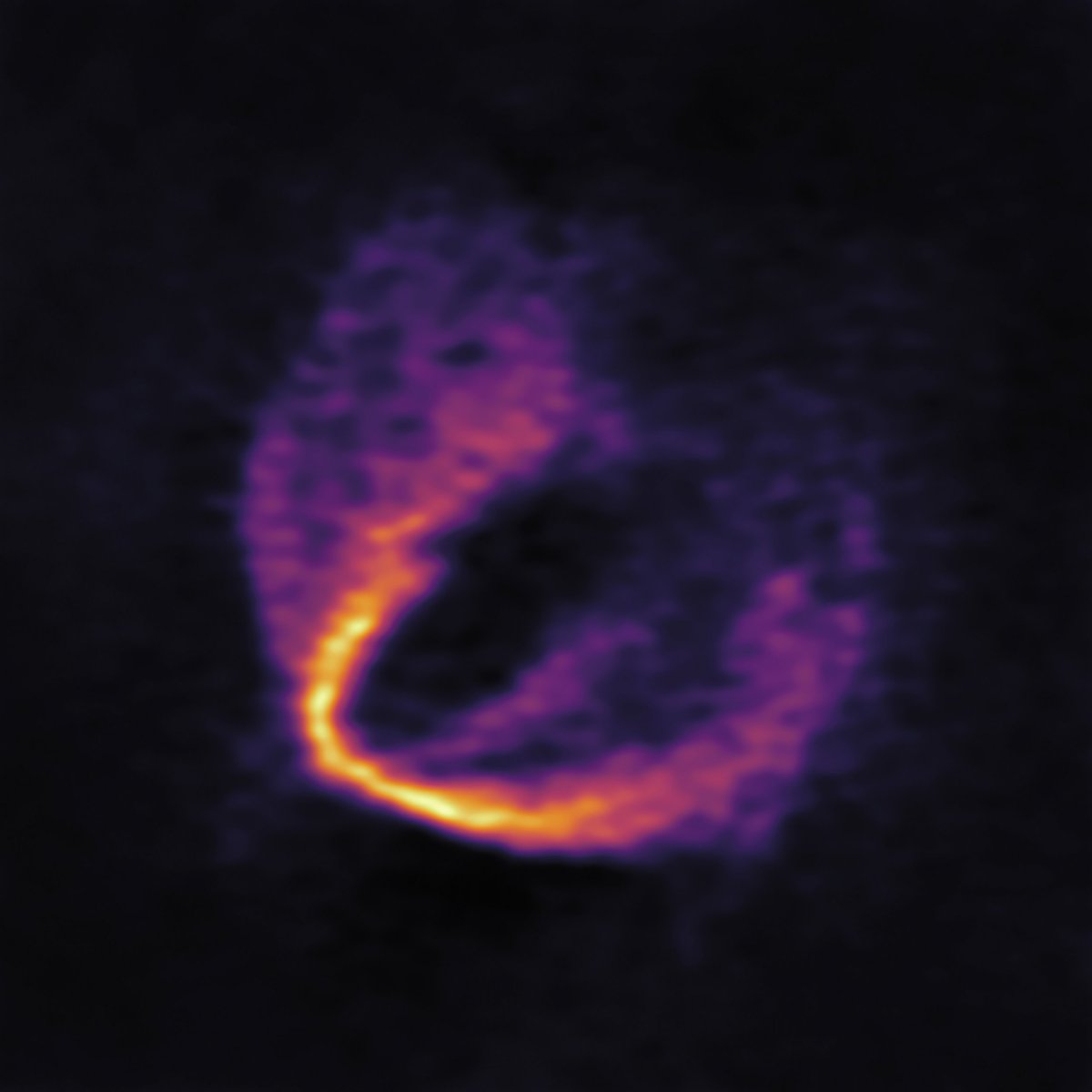Researchers probing the hoops and gaps within a young star's swirling protoplanetary disk believe three baby planets could be to blame for these grooves.
Writing in two papers published in Astrophysical Journal Letters, two separate teams have used a cutting-edge technique that maps the flowing gas around a star's warped and speckled disk to confirm infant star HD 163296 is circled by the newly-formed planets.

Scientists previously suspected protoplanets might be behind the holey, haloed shape of the star's disk back in 2016, but more evidence was needed to be sure. This time around, research teams followed gas rather than dust as it flowed around HD 163296's disk.
"We looked at the localized, small-scale motion of gas in the star's protoplanetary disk. This entirely new approach could uncover some of the youngest planets in our galaxy," said Richard Teague, an astronomer at the University of Michigan and principal author on one of the papers, in a European Southern Observatory statement.
Read more: These 121 giant planets may have habitable moons
HD 163296 is a great target for astronomers because it's a very young star at only four million years old. That might not sound all that young, but its only about 1,000th the age of our Sun. It sits some 300 light years away from Earth in the constellation Sagittarius—also known as "The Archer."
Teague's team found two of the planets, and a team led by Christophe Pinte of Monash University in Australia and Université de Grenoble-Alpes in France found a third. Astronomers believe the planets lie some 7.5 billion, 13 billion and 24 billion miles, respectively, away from HD 163296.
Astronomers can track carbon dioxide molecules by looking for their specific millimetre-wavelength light. The unusual ebbs and flows of gas in the star's disk revealed massive objects interfering with its current, like a rock creating mini whirlpools in a stream as water diverges around it.
Read more: Astronomers find first-ever cloudless exoplanet
The teams used data from Chile's Atacama Large Millimeter/submillimeter Array (ALMA) in slightly different ways to pinpoint the planets. ALMA is the largest astronomy project currently taking place on the ground. It harnesses the probing prowess of 66 high-precision antennas.
Earlier this week, scientists revealed that tiny diamonds swirling around stars are to blame for mysterious microwave signals radiating through the galaxy. Researchers also think they've found some of the building blocks of the solar system in dust grains shed by passing comets.
Uncommon Knowledge
Newsweek is committed to challenging conventional wisdom and finding connections in the search for common ground.
Newsweek is committed to challenging conventional wisdom and finding connections in the search for common ground.
About the writer
Katherine Hignett is a reporter based in London. She currently covers current affairs, health and science. Prior to joining Newsweek ... Read more
To read how Newsweek uses AI as a newsroom tool, Click here.








